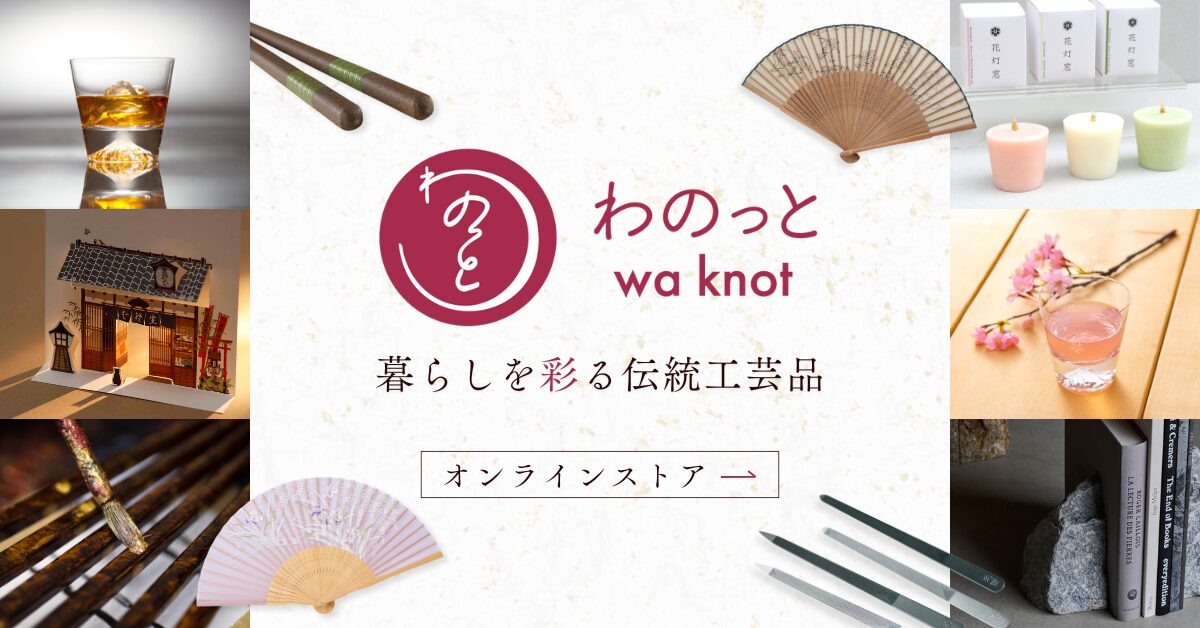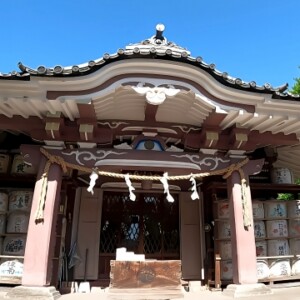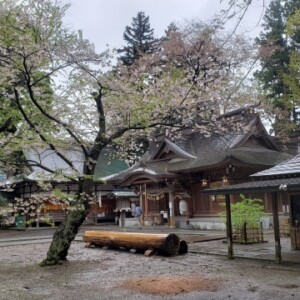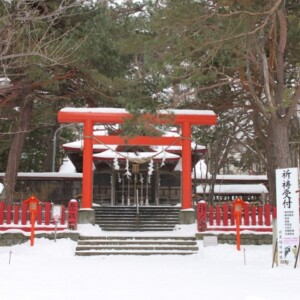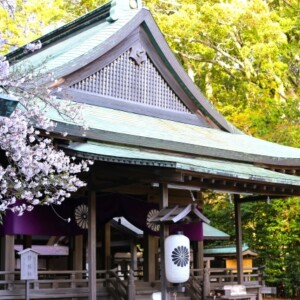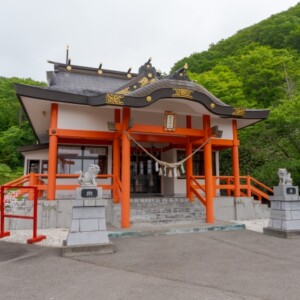
Honjo Itsukushima Shrine (Bijinbenten)|Complete guide to the attraction and visitation of this historic shrine, the only one in Japan that issues beauty certificates
Honjo Itsukushima Shrine, located in Ashikaga City, Tochigi Prefecture, is popularly known as “Bijin Benten” and attracts the attention of many women as the only shrine in Japan that issues “beauty certificates”. It is a special shrine that fulfills the wishes of all women who desire not only external beauty, but also spiritual beauty, health, and longevity.
Outline and basic information about Honjo Itsukushima Shrine (Bijinbenten)
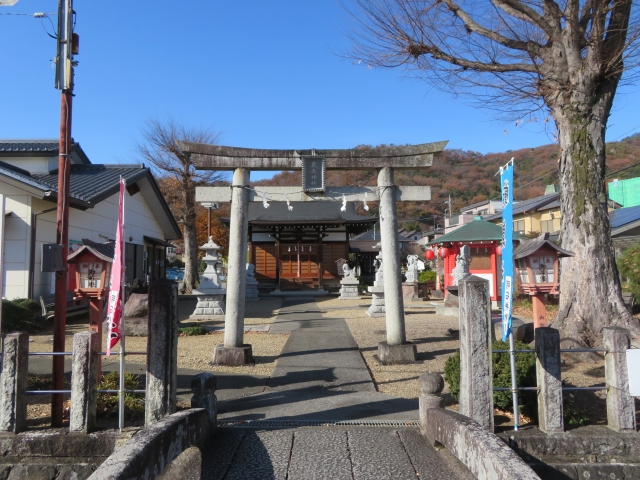
Honjo Itsukushima Shrine is a historic shrine built in 1793 (Kansei 5) and was commonly called “Akashi Benten Shrine” before the Meiji Restoration. Today, it is nicknamed “Bijin Benten” (Beautiful Benten) and attracts worshippers from all over Japan as a shrine that presides over women’s beauty, health, and long life.
History and Origin
The history of Honjo Itsukushima Shrine dates back to the Muromachi Period. During the reign of the Nagao clan, which ruled Ashikaga from 1466 to 1590, the third Nagao Kage-naga revered Benten as the guardian deity of the castle and placed seven Benten around Ashikaga Castle on Ryogeyama. This is called “Nagao no Shichibenten,” and Honjo Itsukushima Shrine played an important role as one of them.
In the past, there was a pond with a clear spring in this area, and Benzaiten was enshrined as a deity closely associated with water. Legend has it that women who drank from the clear water flowing at the foot of Ashikaga’s Ryoge Mountains naturally became beautiful, giving rise to the name “Ashikaga, the Land of Beauty,” and the belief in the goddess Benten.
The “Yae no Monogatari” (The Tale of Yae) is particularly famous. Legend has it that a woman named Yae, who was born into a family of short-lived ancestors and was plagued by numerous calamities, followed the teachings of her traveling companions and visited Benten for 100 days. This story is the origin of the belief in Benten.
Deities and Benefits
The deity of Honjo Itsukushima Shrine is Princess Ichikishimahime no Mikoto, and Bijinbenten is enshrined as an alter ego of Princess Ichikishimahime no Mikoto. Ichikishimahime-no-Mikoto is the god of water and is also worshipped as Benzaiten, the only female deity among the Seven Gods of Good Fortune.
Bijinbenten is known as a god who grants the three wishes of “health, long life, and beauty,” with particular emphasis on the kindness of a woman’s heart. The word “beauty” here refers not only to external beauty, but also to the beauty that oozes from within and the kindness of a woman’s heart.
Honjo Itsukushima Shrine (Bijinbenten) Highlights and Features
Despite its small precincts, Honjo-Itsukushima Shrine is a shrine full of attractions with a variety of Benten deities and unique cultural values. In particular, the issuance of Japan’s only certificate of beauty and encounters with the various Benten deities scattered throughout the shrine grounds attract visitors.
Japan’s only beauty certificate
The greatest feature of Honjo Itsukushima Shrine is that it is the only shrine in Japan that issues a “Certificate of Beauty. This beauty certificate is not merely a mere memento, but is positioned as a special amulet that certifies the “beauty of the heart” recognized by the Bijinbenten.
There are two types of Bijin Benten: card size and postcard size, and the postcard size can be personalized with a name. They are popular not only for personal use, but also as gifts for loved ones. These certificates are issued not for external beauty, but to protect and certify the “kindness of heart of women” that all women possess, and are a source of emotional support for women who visit the shrine.
The beauty certificates are issued at the shrine office on the first and third Sundays of each month, which are the opening days of the shrine, and can also be picked up at nearby Car & Cycle Tanaka and Barley Workshop Roa Asakura on non-opening days.
Benten-sama Tour of the Precincts
There are several Benten-sama enshrined within the grounds of Honjo-Itsukushima Shrine, each with different benefits. On the left as you enter the shrine grounds, “Mizuukake Benten” sits on a rock, and is believed to be a deity that washes away misfortune.
The “Nade Benten” is positioned on the left and right to protect the vermilion colored hall in the center of the precincts. They look like twins, but each wields a different biwa, and it is believed that visitors can obtain blessings of “health, long life, and beauty” by stroking this Benten-sama.
Inside the hall, the main deity, Akashi Benten, is enshrined. This Akashi Benten is the main body of the Bijin Benten and occupies an important position as one of Ashikaga’s Seven Deities of Good Luck. The beautiful figure of Akashi Benten, full of presence, leaves a deep impression on many visitors.
Cultural Value as One of the Seven Benten in Nagao
Honjo Itsukushima Shrine has important cultural and historical value as one of the “Seven Benten of Nagao” placed by the Nagao clan that ruled Ashikaga in the Muromachi period. To protect Ashikaga Castle, the Nagao clan placed seven Benten deities around the castle, each with its own guard to protect the castle.
This arrangement of seven Benten was not merely a religious facility, but also functioned as part of the castle defense system during the Warring States period. Even today, traces of Nagao’s Seven Benten remain in Ashikaga City, and the Honjo Itsukushima Shrine is one of the most valuable of these where the faith has been handed down.
In addition, behind Ashikaga’s reputation as the “Land of Beauties” lies a unique regional character that combines the natural environment of fresh water at the foot of the Ryoge Mountains and the cultural element of the Benzaiten faith. This cultural background is the basis for the current belief in Benten, a beauty, and is also an important cultural heritage that tells of the history and culture of the region.
Guide to Worship and Visiting the Shrine
Itsukushima Shrine is open to visitors year-round, but there are specific dates for special visits to the Bijinbenten and for the issuance of beauty certificates. Understanding the shrine’s manners of worship and using proper etiquette will help you receive deeper benefits from your visit.
Worship Etiquette and Manners
When visiting Honjo-Itsukushima Shrine, please follow the general manners of shrine visits. When passing through the torii gate, bow and walk away from the center of the path. Purify your hands and mouth at the hand- and mouth-cleansing booths before proceeding to the shrine.
When visiting Bijinbenten, it is especially recommended to visit each Benten-sama on the temple grounds in order. First, visit the Water Dripping Benten near the entrance to wash away misfortune, then visit the Nade Benten to wish for good health, long life, and beauty, and finally, carefully visit the Akashi Benten in the main hall.
When patting Nade-benten, do not forget to be considerate of other visitors. During crowded times, it is important to be considerate of others and stroke the nade-benten slowly and mindfully. After visiting the shrine, bow in gratitude and quietly leave the premises.
Opening Days and Special Visits
The Bijinbenten of Honjo Itsukushima Shrine is open on the first and third Sunday of each month as a special “Kaito Day. On these opening days, visitors can see the Bijinbenten up close, which is not usually possible, and enjoy a special experience of worship.
On the opening day, the shrine office in the center of the temple grounds will be open to issue certificates of beauty and red seals. Since many visitors come to the shrine on this day, it is recommended that you allow plenty of time for your visit. Especially in the morning, there are relatively few crowds and you can visit the shrine calmly.
Although it is possible to visit the shrine on non-opening days, if you need a red seal for the beauty certificate or beauty benten, you can pick one up at Car & Cycle Tanaka or Barley Workshop Roa Asakura, located about 100 meters straight ahead from the torii gate. These stores handle the awarded items in cooperation with the shrine for the convenience of visitors.
Red Seal and Good Luck Charm Information
Honjo Itsukushima Shrine offers two types of red seals: Akashi Benten and Bijin Benten. Akashi Benten red seal can be obtained at the shrine office in the back left corner of the shrine grounds, and Bijin Benten red seal can be obtained at the shrine office in the center of the shrine grounds on days when the doors are open. The red seal of Bijinbenten is made of pink Japanese paper and features a beautiful feminine design.
Each red seal costs 300 yen, and paper red seals are also available for those who do not have a red seal book. Many people visit the temple as part of the Ashikaga Seven Lucky Gods tour, and Akashi Benten’s red seal is also stamped with the stamp of the Ashikaga Seven Lucky Gods.
The beauty certificate is the shrine’s most distinctive amulet and is available in two sizes: card and postcard. The postcard-size amulet can be personalized with a name, making it a popular gift not only for oneself but also for loved ones. Various other amulets related to health, longevity, and beauty are also available, and many people use them as souvenirs of their visit to the shrine.
Access and Visiting Information
Honjo-Itsukushima Shrine is located slightly north of the center of Ashikaga City and is accessible by both public transportation and private vehicles. Please refer to detailed transportation and facility information for help in planning your visit.
Traffic Access
The nearest train stations are Ashikaga Station on the JR Ryomo Line or Ashikaga-shi Station on the Tobu Isezaki Line; from JR Ashikaga Station it is approximately a 25-minute walk or 5-minute cab ride. From JR Ashikaga Station, it is a 25-minute walk or 5-minute cab ride.
If you choose to walk, we recommend that you take the route via Ashikaga Gakko (Ashikaga School) and Ashikaga-dera Temple. A 10-minute walk north from Hoa-ji Temple will take you to Honjo Itsukushima Shrine, allowing you to visit multiple points of interest as part of your Ashikaga sightseeing tour.
Access by car is approximately 10 minutes from the Ashikaga Interchange on the Kita-Kanto Expressway. When using a car navigation system, search for “2-1860 Honjo, Ashikaga City, Tochigi Prefecture” to identify the exact location. Since there are many one-way streets in the Ashikaga urban area, it is recommended to check the route in advance.
<Address> 2-1860 Honjo, Ashikaga-shi, Tochigi 326-0808
Hours of operation, fees, and parking information
The grounds of Honjo Itsukushima Shrine are open to visitors year-round. There are no fees related to worship, but additional fees are required for beauty certificates, red seals, and other awards. Special visits on opening days are also free of charge.
Free parking is available for approximately 10 cars on the shrine grounds. Since it may be crowded on the opening day and during the tourist season, we recommend that you consider using public transportation. If you are unsure of where to park, ask local residents, who will often be able to help you.
Red seals and certificates of beauty are available from morning to afternoon on opening days, but we recommend that you confirm the detailed hours in advance. For handling of awards outside of the opening days, please inquire at the affiliated stores as their business hours are the same as those of the stores.
Refer to the following websites
Bijinbenten official website: https://bijinbenten.com/
Ashikaga City Tourism Association, Ashikaga: https://www.ashikaga-kankou.jp/spot/akeshibenten


